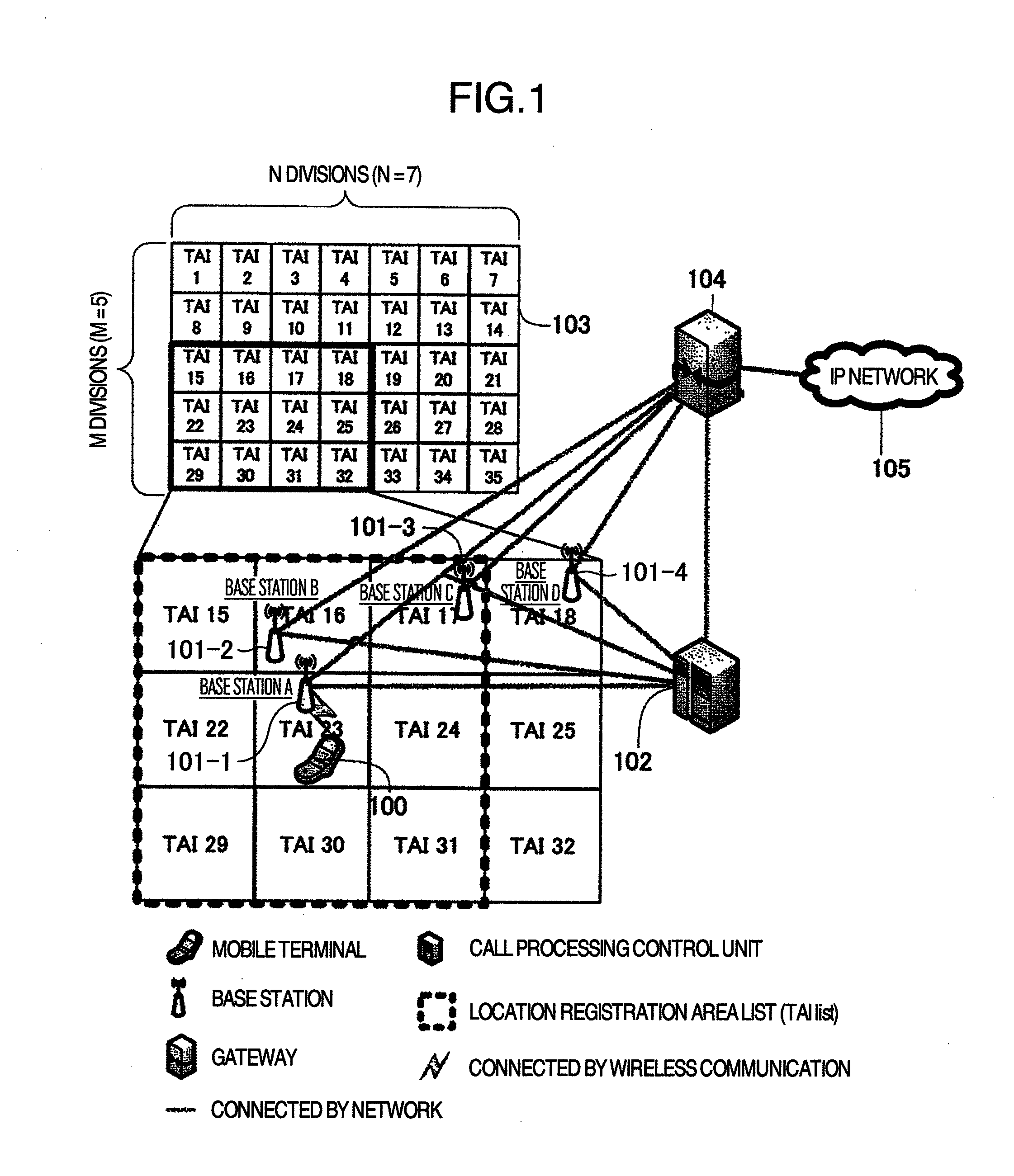Wireless communication system
a wireless communication and mobile terminal technology, applied in the field of wireless communication systems, can solve the problems of consuming a large amount of wireless resources in the location registration process, imposing a heavy burden on the local wireless resources, and unable to reduce the consumption of wireless resources in the particular area as a whole, so as to reduce the load on the network
- Summary
- Abstract
- Description
- Claims
- Application Information
AI Technical Summary
Benefits of technology
Problems solved by technology
Method used
Image
Examples
Embodiment Construction
[0039]Embodiments of the invention are explained in detail below with reference to the accompanying drawings.
[0040]FIG. 1 is a diagram showing the configuration of the wireless communication system according to this invention.
[0041]The wireless communication system includes a mobile 100 (also called a wireless terminal) 100, base stations 101 (four base stations, i.e. base stations A101-1, B101-2, C101-3 and D101-4 in the case under consideration), a call processing control unit 102 and a gateway 104. The mobile terminal 100 and the base stations 101 communicate with each other wirelessly. The base stations 101, the call processing control unit 102 and the gateway 104 are connected in wired mesh. The gateway 104 is connected to an IP network 105. The mobile terminal 100 transmits and receives data to and from a server located in the IP network 105 through the base stations 101 and the gateway 104. Each base station 101 is installed in a location registration area and holds the TAI c...
PUM
 Login to View More
Login to View More Abstract
Description
Claims
Application Information
 Login to View More
Login to View More - R&D
- Intellectual Property
- Life Sciences
- Materials
- Tech Scout
- Unparalleled Data Quality
- Higher Quality Content
- 60% Fewer Hallucinations
Browse by: Latest US Patents, China's latest patents, Technical Efficacy Thesaurus, Application Domain, Technology Topic, Popular Technical Reports.
© 2025 PatSnap. All rights reserved.Legal|Privacy policy|Modern Slavery Act Transparency Statement|Sitemap|About US| Contact US: help@patsnap.com



